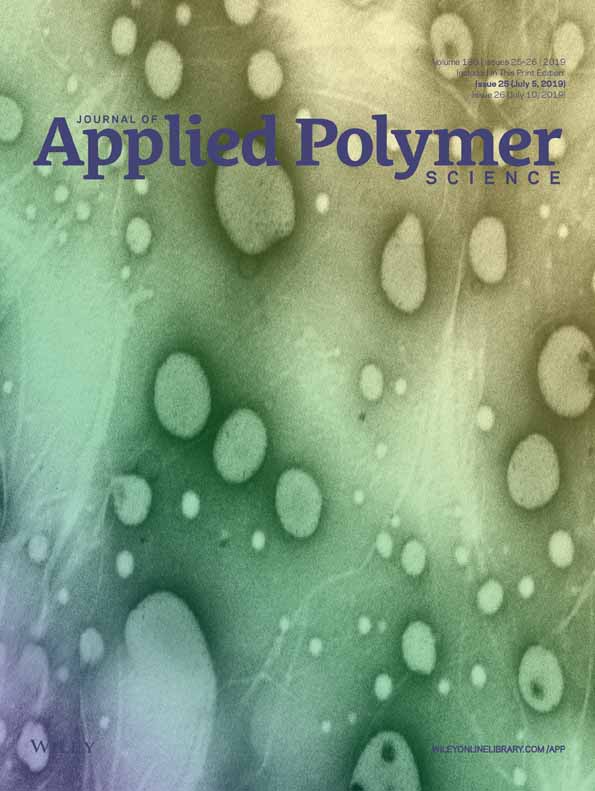Effects of two types of nanoparticles on the cure, rheological, and mechanical properties of rubber nanocomposites based on the NBR/PVC blends
ABSTRACT
The effects of graphene nanoplatelet (GNP) and organoclay montmorillonite (OMMT) on the curing, relaxation, and the mechanical properties of acrylonitrile-butadiene rubber/polyvinyl chloride (NBR/PVC) nanocomposites were investigated. Scorch and cure times of nanocomposites reinforced with GNP increased, while these parameters for nanocomposites reinforced with OMMT decreased. Maximum torque and cure rate increased after adding the nanoparticles. In the relaxation curves, with increasing nanoparticle and acrylonitrile (ACN) content, both the slopes of short- and long-term regions, raised. Cured compounds have the significantly higher initial and final modulus, the greater elastic slope, and lower viscous slope than the uncured ones. The results of the relaxation test showed that the relaxation percentage in the uncured samples was much higher than the cured ones. Also, with the addition of both GNP and OMMT, this parameter had an upward trend. DGS/DGL parameter increased with the addition of nano-reinforcements in the uncured state while decreasing in the cured state. For example, the blend containing N3 reinforced via GNP showed an 11% increase in the uncured state, whereas 14% reduction in the cured state. Tensile strength, elastic modulus, and hardness were improved by incorporating nanoparticles, while the effect of GNP was more intense. The similar trend observed in samples with NBR type of higher ACN content. © 2019 Wiley Periodicals, Inc. J. Appl. Polym. Sci. 2019, 136, 47550.




